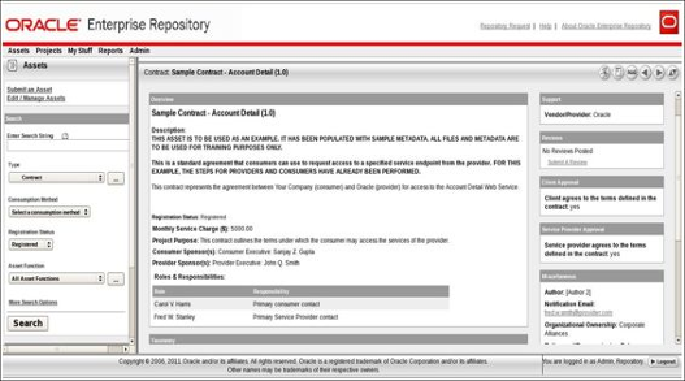Database Reference
In-Depth Information
• The lifecycle service events can be recognized, and automated notifications can
be delivered to access subscribers.
• What if we have legacy services or bulk-delivered projects? The Asset Harvesting
tool can discover the artifacts and populate OER. Harvesting also supports
clustered environments.
• Most of the OER features are accessible from SOA IDEs.
• The bi-directional synchronization with UDDI registries.
• Oracle BI Publisher supports a whole range of OER standard and custom reports.
Oracle Enterprise Repository
is a vital element of any service inventory, ensuring
runtime and design time discoverability and, ultimately, maintaining composability.
Really, what good will even the best of our services do if nobody knows of their existence
and capabilities? Or, how do we know that the service is really good if we do not know its
vital metrics and runtime statistics? How can we assure service consumers about a ser-
vice's vitality without providing stress test results and a description of test harnesses?
How can we collect money for service usage? How can we centralize our business
policies?
With or without OER, we will have to answer all these questions. The realization painful-
ness will be directly proportional to the size (and complexity) of our enterprise: a small
company with 10 employees will probably do well with one Excel spreadsheet, but any

Search WWH ::

Custom Search